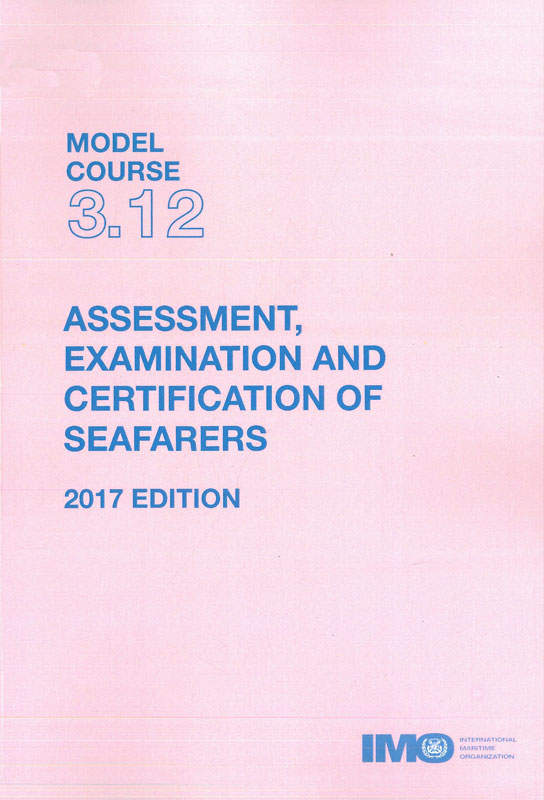Assessment, examination and Certifacation of Seafarers. Model course 3.12
Издание полностью на английском языке
After the adoption of the International Convention on Standards of Training, Certification and Watchkeeping for Seafarers (STCW), 1978, the International Maritime Organization (IMO) recognized the need to provide guidance to maritime academies and training institutes to develop model training courses that are in compliance with STCW Convention requirements for certification of seafarers. Hence the IMO model course programme was introduced to provide guidance with a view to supporting maritime training providers and to assist maritime administrations responsible for the approval of STCW courses.
The model course programme has been a long-time success and IMO has developed a number of model courses to help in effectively implementing the STCW Convention and the Knowledge, Understanding and Proficiency (KUP) requirements of the STCW Code. I believe that the key to this success is adherence to the requirements of the Convention while, at the same time, these requirements are supplemented with industry best practices so that seafarers can be confident in carrying out the duties on board. The success of a course depends on the skills and competence of individual course facilitators. As part of the model courses, SMO has also developed guidance on the implementation of the model course, which may help those less experienced facilitators to make each course a success.
Contents
Introduction
Purpose of the model courses
Use of the model course
Lesson plans
Presentation
Evaluation or assessment of trainees' progress
Implementation
Structure
Responsibilities of Administrations
Validation
Part A: Course Framework
Scope
Objectives
Entry standards
Course certificate
Course intake limitations
Staff requirements
Teaching facilities and equipment
Teaching aids (A)
Bibliography (B)
IMO references (R)
Internet website references (W)
Part B: Course Outline and Timetable
Lectures
Course Timetable
Part C: Detailed Teaching Syllabus
Part D: Instructor Manual
Introduction
Bibliography
Guidance notes for lectures and practical activities
Appendix A: Activities for Section 1 - The STCVV Convention, 1978, as amended
Appendix B: Activities for Section 2 - Quality system
Appendix C: Activities for Section 3 - Assessing applications
Appendix D: Activities for Section 5 - Approving training, assessment and records
Appendix E: Activities for Section 6 - Competence-based standards
Appendix F: Activities for Section 7 - Developing written tests
Appendix G: Activity for Section 3 - Invigilation of tests
Appendix H: Activity for Section 9 - Scoring tests
Appendix I: Activity for Section 10 - Oral and practical tests
Appendix J: Activities for Section 12 - Maintenance of standards
Appendix K: Activities for Section 13 - Administration
Appendix L: Activity for Section 14 - Course review and practical evaluation activity
Part E: Evaluation and Assessment
Initial/Diagnostic assessment
Formative assessment
Summative assessment
Evaluation for Quality Assurance
Assessment Planning
Validity
Reliability
STCW
Calculations
Compiling tests
Quality of test items
Scoring subjective tests
Marking papers
Advantages and disadvantages of oral and practical tests
Attachment 1: Examples of Competence-Based Assessment for Seafarers
Sample A: Defining the tasks for competence in table A-1I/1 of STCW Code
Sample B: Defining the tasks for competence in table A-II1/1 of STCW Code
Attachment 2: Guidance on the implementation of Model Courses
Attachment 3: Instructor Feedback on Model Course
Guidance on the implementation of IMO model courses



